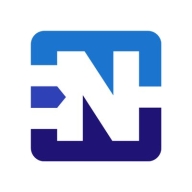


In the realm of network security solutions, Netgate pfSense and Meraki MX are prominent contenders. While both have unique strengths, pfSense often takes the lead in customization and open-source flexibility, whereas Meraki MX excels in cloud-based management and integration within the Cisco ecosystem.
Features: Netgate pfSense offers powerful open-source capabilities, extensive customizations, and features like VPN, load balancing, and multi-WAN. It supports a wide range of hardware and benefits from robust community support. Meraki MX offers cloud-managed simplicity with seamless integration with Cisco products, enforcing this through its dashboard with features such as content filtering and SD-WAN.
Room for Improvement: Netgate pfSense requires enhanced centralized management, a more user-friendly interface, and improved plugin support. For Meraki MX, improvements could be made in real-time analytics access, configuration flexibility, and more comprehensive security features like deeper SSL inspection.
Ease of Deployment and Customer Service: Netgate pfSense is versatile, supporting both on-premises and hybrid deployments. While it enjoys extensive community support, its official customer service can be inconsistent. Meraki MX is recognized for easy deployment via its cloud infrastructure and has responsive customer service.
Pricing and ROI: Netgate pfSense provides a cost-effective solution with its free open-source software, minimizing costs and offering significant ROI for small to medium businesses. In contrast, Meraki MX, with its higher licensing fees and subscription models, incurs elevated operational costs, which can be justified by its cloud integration and management efficiencies for companies invested in Cisco solutions.
Clients are now comfortable and not wasting productive hours on IT support.
We have experienced a positive return on investment by utilizing Fortinet's products.
There's definitely an ROI. Having a centralized way of managing and applying policies across the entire organization always helps.
If they can save their data from attackers then it would save them at least two days of not working plus the cost of recovery, which would be much more than the cost of the system and maintenance.
Since the memory leak fixes, it's been incredibly stable and requires minimal maintenance.
In four years of using it, that payment of 189 dollars per year has already paid off.
He explained that it required a command line configuration, as it couldn't be done through the graphical user interface.
I would rate their support for FortiGate a nine out of ten.
They offer very accurate solutions.
When I provide detailed information about the problem, they've been able to reply quickly with a solution or go research the problem and get back to us quickly with a fix.
They are highly responsive.
I couldn't imagine having better support.
They scale up really well from smaller models like the FortiGate 40 and 50 to bigger sites with the FortiGate 100 for more throughput - up to enterprise datacenters.
The variation comes in terms of the interfaces and throughputs, but from a security perspective, you get the same benefit, irrespective of whether you have an entry-level unit or an enterprise.
You can choose a cheaper model if you only have 20-30 users, but you will need to spend more money for a FortiGate solution that covers 5,000.
We have Juniper solutions, and I would say the Juniper solutions can scale better, however, this solution is still very scalable.
If I put things into a certain context and say that we have a network that has around 100 people, then you don't put up a device that can manage 100 people. Instead, you need to get a device that can manage 150 to 200 people, and then you can create room for growth.
I don't think Netgate pfSense can offer much scalability for big enterprises.
Even with a jump from a 50 megabit to a 500 megabit internet connection and approximately 65 active VPN clients, our firewall operates smoothly without any strain.
Improper handling of these can lead to a memory surge, a well-known bug that can cause the entire system to freeze.
It is less stable than Palo Alto Networks and Check Point firewalls because there are lots of bugs in the latest firmware.
We have not had any problems with the operating systems or maintenance of subscriptions.
I rate the solution's stability a ten out of ten.
I've noticed a substantial improvement in stability and ease of use for upgrades and patching over the past year or two.
When I replace consumer routers with pfSense for small businesses with two or three employees, they are often amazed to discover the router can run for a year without a reboot.
If I have put 10 GBPS of throughput on a firewall and I enable all of these features available, such as IPS or UTM functionalities, the throughput comes down to 1 GBPS.
By providing an integrated solution, users would have access to all features and functionalities within a single window, eliminating the need to navigate through multiple windows.
Investing in a solution that can accommodate such growth would be more cost-effective than repeatedly purchasing new hardware.
Data is the only path, so optimization is essential.
There is some trade-off between having a certain level of security and maintaining acceptable performance.
If I need to go between different VLANs, I have VLAN 19.1 and VLAN 19.2, and I strictly use Netgate pfSense, but it doesn't route very efficiently and works quite slowly.
They should support the idea of configuration management as code from source code and provide a more robust API for managing the pfSense configuration.
Secure SD-WAN is free of charge.
The most expensive part is the renewal of the license subscription.
FortiGate is priced lower than Palo Alto.
In terms of pricing, I would say it is not the cheapest, but it was comparable to the others.
It is neither expensive nor cheap.
The price of setup is approximately €500 to €800, which also includes the initial monitoring.
You can acquire a decent embedded PC for around a hundred dollars and install pfSense on it, effectively creating a robust firewall solution.
The product is free of cost.
The firewall, IPS, and VPN functions are the most valuable features.
FortiGate provides solid protection against viruses, malware, and other threats.
Within the same dashboard, you get to see the security profiles, the type of traffic that's passing through, the top applications that are being consumed, etc.
We understand that Cisco solutions are very reliable, and we really like the simple management.
Since cybersecurity is my main concern, this type of miscommunication relating to vulnerability blocking is crucial.
With pfSense, network configurations adhere to standard practices, facilitating troubleshooting without the need for complex overlays or policies.
The price point is the most valuable aspect of the solution.
I like the tool's flexibility in the sense that you do not have to buy an appliance. You can put it on your own hardware, and it can be very simplistic hardware with simple configurations.



Fortinet FortiGate offers comprehensive network security and firewall protection across multiple locations. It effectively manages data traffic and secures environments with features like VPN, intrusion prevention, and UTM controls.
Organizations rely on Fortinet FortiGate for its robust integration with advanced security policies, ensuring significant protection for enterprises, cloud environments, and educational sectors. It facilitates network segmentation, application-level security, and authentication management, securing communication within and between locations such as branches and data centers. Its efficient SD-WAN and UTM features enable streamlined data management and enhanced threat protection capabilities. Users appreciate its centralized management, facilitating seamless operations across diverse environments.
What are the key features of Fortinet FortiGate?
What benefits should users expect from Fortinet FortiGate?
Fortinet FortiGate is crucial in sectors like education, offering robust networks for secure data flow between campuses and facilitating remote learning. In enterprise environments, it allows efficient management of application traffic and security across multiple branches, while in the cloud, it seamlessly integrates with diverse platforms to enhance security infrastructure.
Cisco Meraki MX appliances are next-generation firewalls with all the advanced security services needed for today’s IT security. The appliances are ideal for organizations considering a unified threat management (UTM) solution for branch offices, data centers, distributed sites, or campuses. Since Meraki MX is 100% cloud-managed, installation and remote management are simple and zero-touch.
Meraki MX’s hardware and virtual appliances are configurable in Microsoft Azure, Amazon Web Services (AWS), and Google Cloud Platform, and private cloud support is offered through Cisco NFVIS and Alibaba Cloud.
Organizations of all sizes and across all industries rely on Meraki MX to deliver secure connectivity to hub locations or multi-cloud environments, as well as application quality of experience (QoE) through advanced analytics with machine learning.
Cisco Meraki’s advanced QoE analytics offers:
Cisco Meraki’s SD-WAN offers:
The Meraki MX’s SD-WAN is unique in that it can be easily extended to deliver optimized access to resources in public and private cloud environments with virtual MX appliances. Its SD-WAN lowers operational costs and improves the performance of remotely-accessed resources. Users can ensure the availability of the apps and services their employees use most through dynamic path selection, policy-based routing, support for application-layer profiles, and VPN.
Meraki MX offers industry-leading cloud management that has template-based settings which can scale easily from small deployments to tens of thousands of devices. It features an intuitive web-based dashboard for managing mobile devices, united firewalls, switching, and wireless LAN. Users can also benefit from role-based administration, configurable email alerts for a variety of important events, and easily auditable change logs. Meraki MX is capable of producing summary reports with device, user, and application details archived in the cloud.
Meraki MX Key Features
MX has a robust suite of network services in an all-in-one device, which saves you money by eliminating the need for multiple appliances. These services include:
Reviews from Real Users
Meraki MX stands out among its competitors for a number of reasons. Two major ones are its easy management and its ability to be accessed remotely. Below is some feedback from PeerSpot users who are currently using Meraki MX as their firewall security solution.
Craig B., a central services engineer at Liberty Technology, writes, “The web console for managing everything keeps everything on Meraki and keeps us from going somewhere else. It is why I think a lot of people like Meraki. Comparing it to SonicWall or even a different Cisco firewall, like traditional ASAs, managing Meraki is a thousand times easier because of fluidity. You don't have to rebuild a table just to change one rule. It's much more readable for a human.”
Edgardo C., an IT director, notes,”By using the VPN, we can connect remotely. We have two offices, and we could connect them through the VPN. We could establish a network between two sites, and that has improved and increased communication and productivity. Our remote site is able to access the server remotely.”
Netgate pfSense is widely leveraged by organizations for its comprehensive capabilities in firewalls, VPN servers, and bandwidth management. It suits LAN, WAN, and DMZ networks, offering secure, scalable, and efficient networking solutions.
Netgate pfSense stands out in diverse environments with its enterprise-grade features and cost-effective operations compared to competitors like Cisco. Deployed as an edge device, it optimizes routing, ad-blocking, content filtering, and traffic shaping. Users benefit from its versatile configurations, robust firewall protection, VPN functionality, and ISP load balancing. The open-source nature allows for extensive customization, integrating plugins like Snort and pfBlockerNG, and compatibility with third-party tools enhances its utility. The intuitive GUI combined with detailed logging and centralized management fortifies network security.
What features define Netgate pfSense?
What benefits should be considered for ROI?
Organizations in industries such as finance, healthcare, and education find Netgate pfSense integral due to its advanced security features and cost benefits. Its scalable architecture and strong VPN support are crucial for industries requiring stringent data protection and reliable remote access. The adaptability of pfSense makes it suitable for dynamic environments seeking comprehensive, secure networking solutions.
We monitor all Firewalls reviews to prevent fraudulent reviews and keep review quality high. We do not post reviews by company employees or direct competitors. We validate each review for authenticity via cross-reference with LinkedIn, and personal follow-up with the reviewer when necessary.